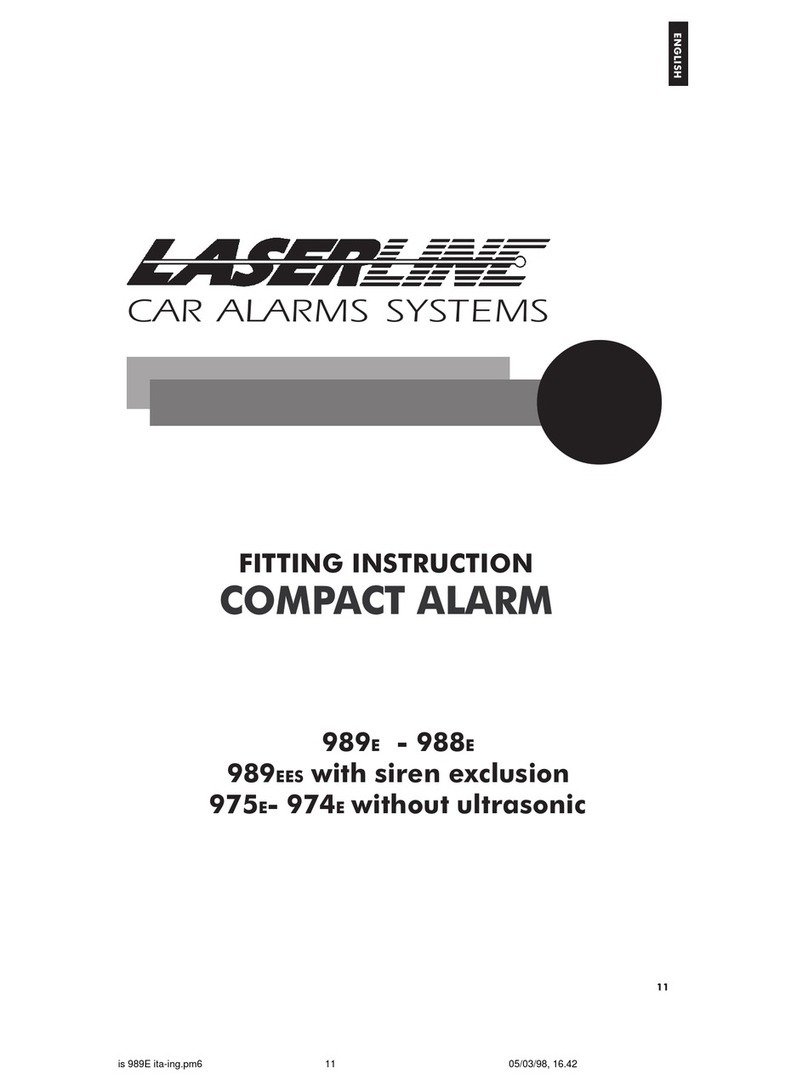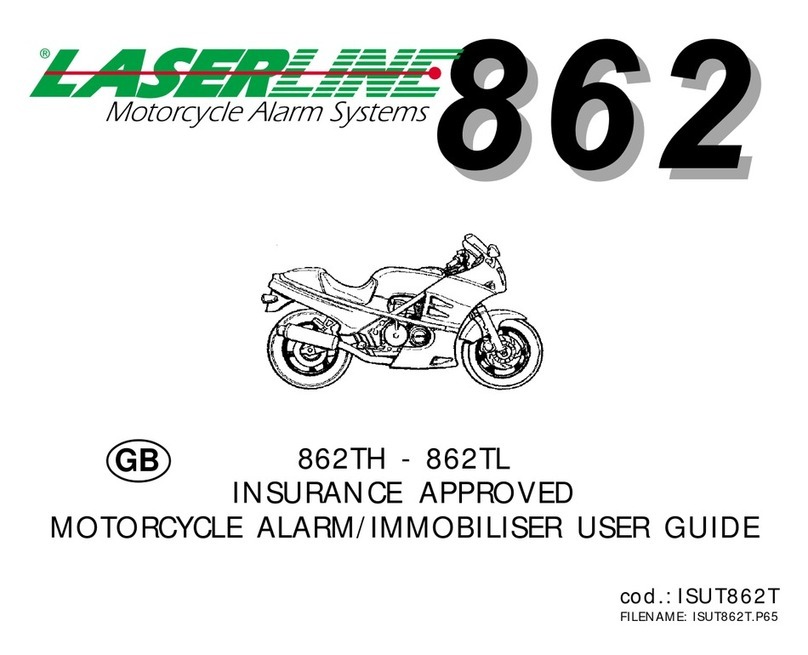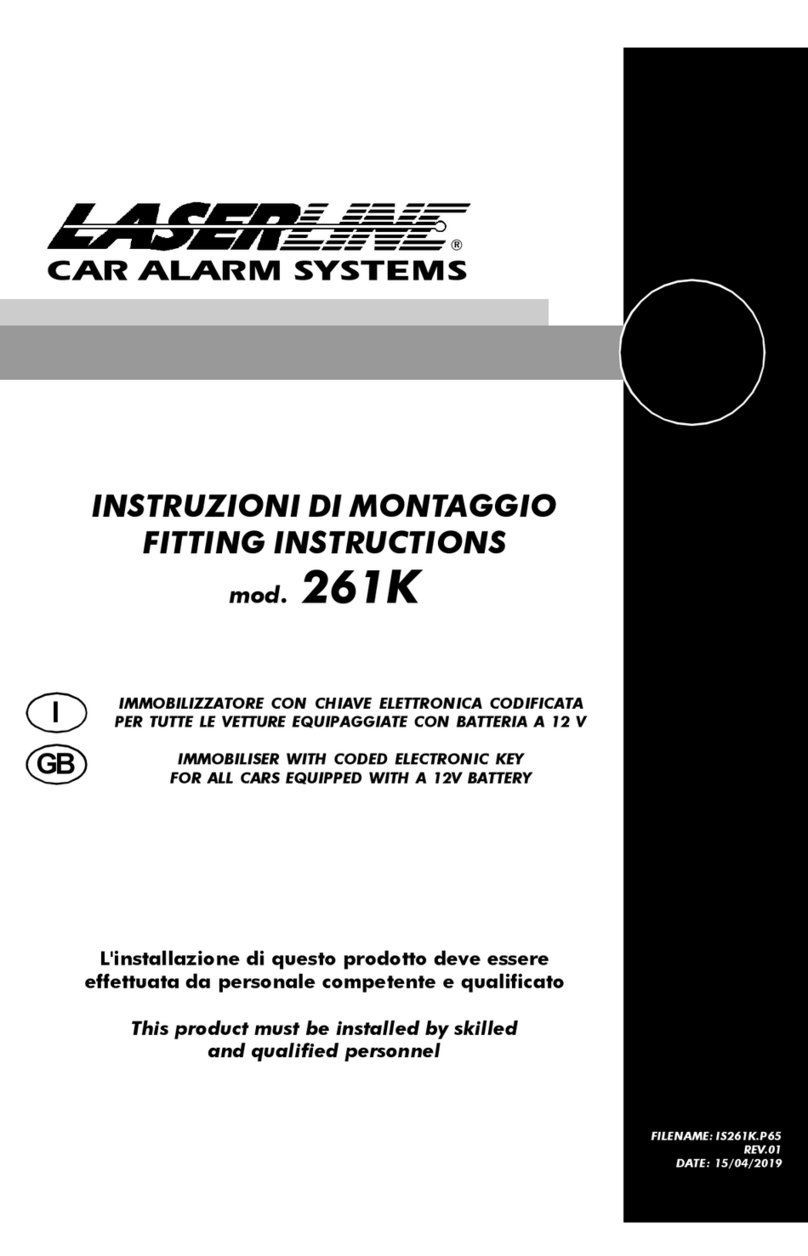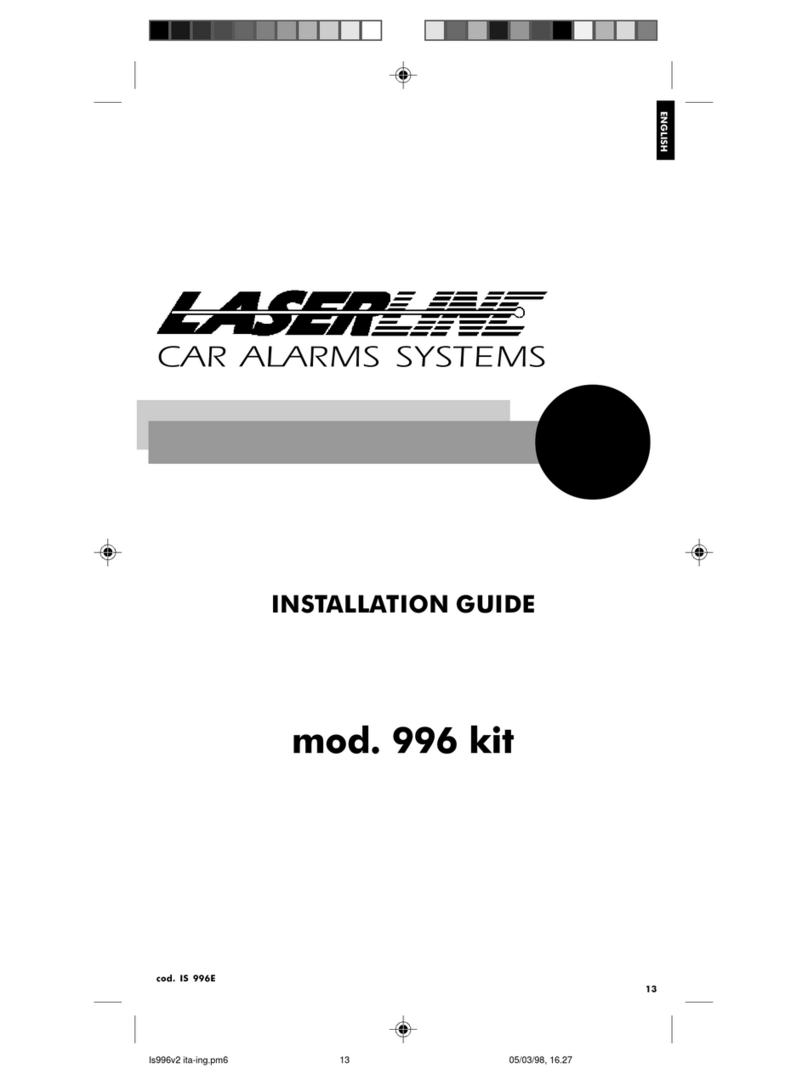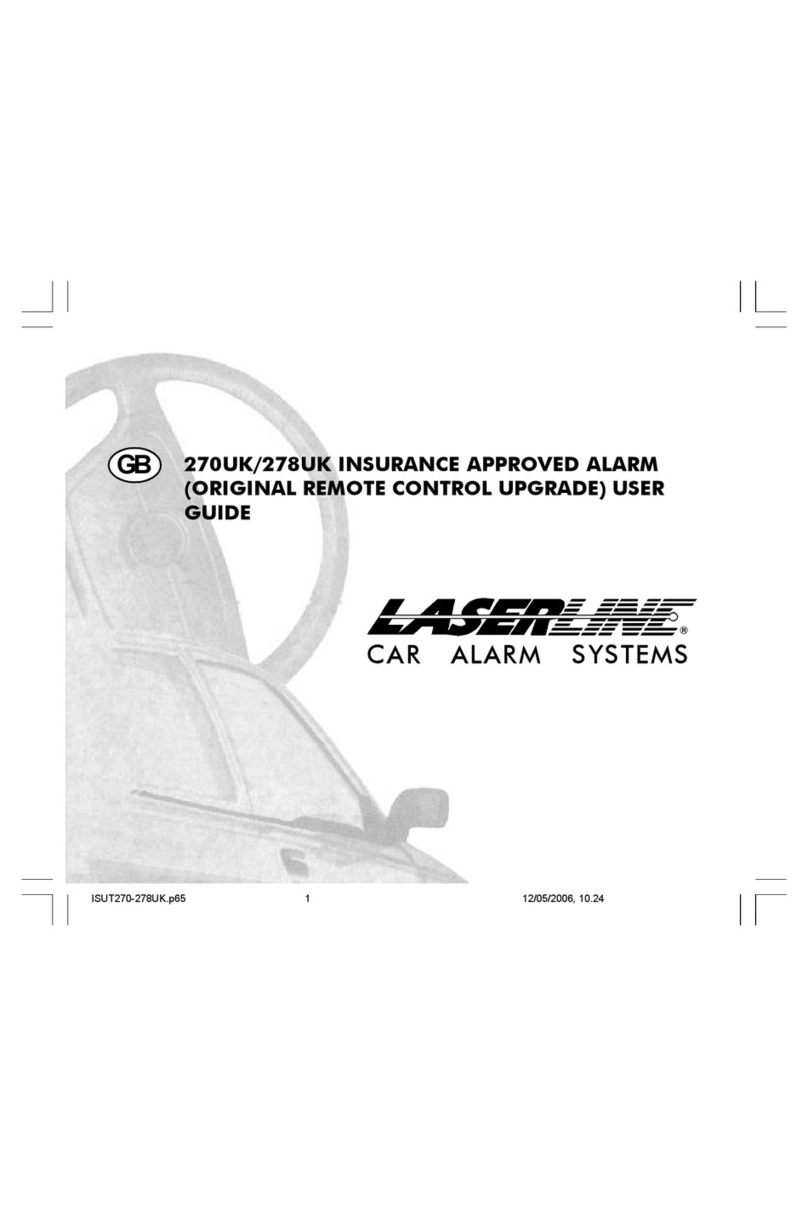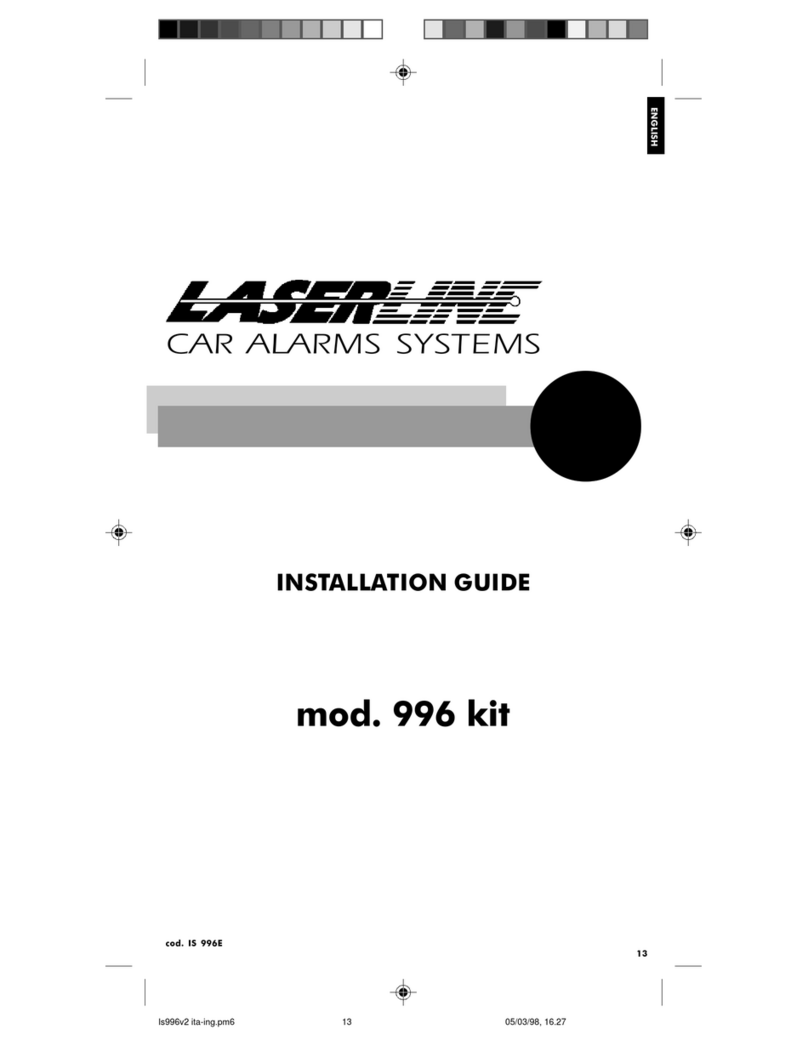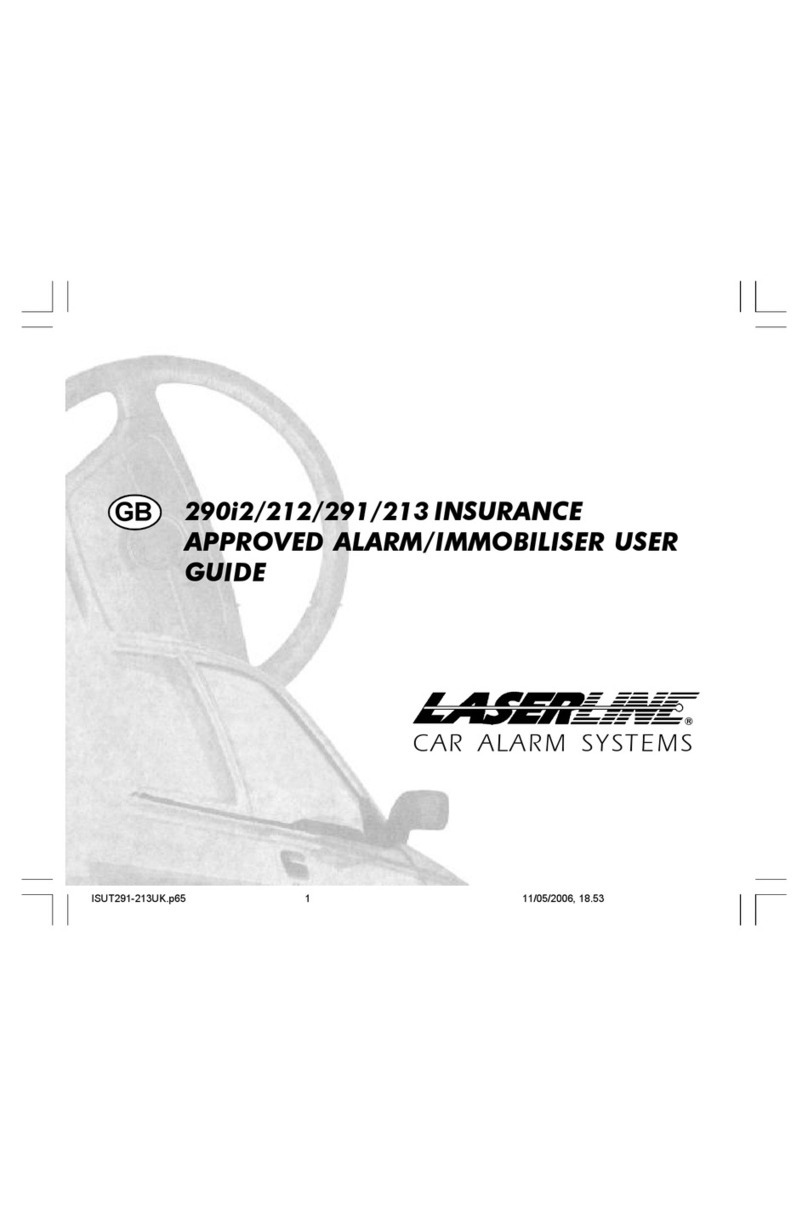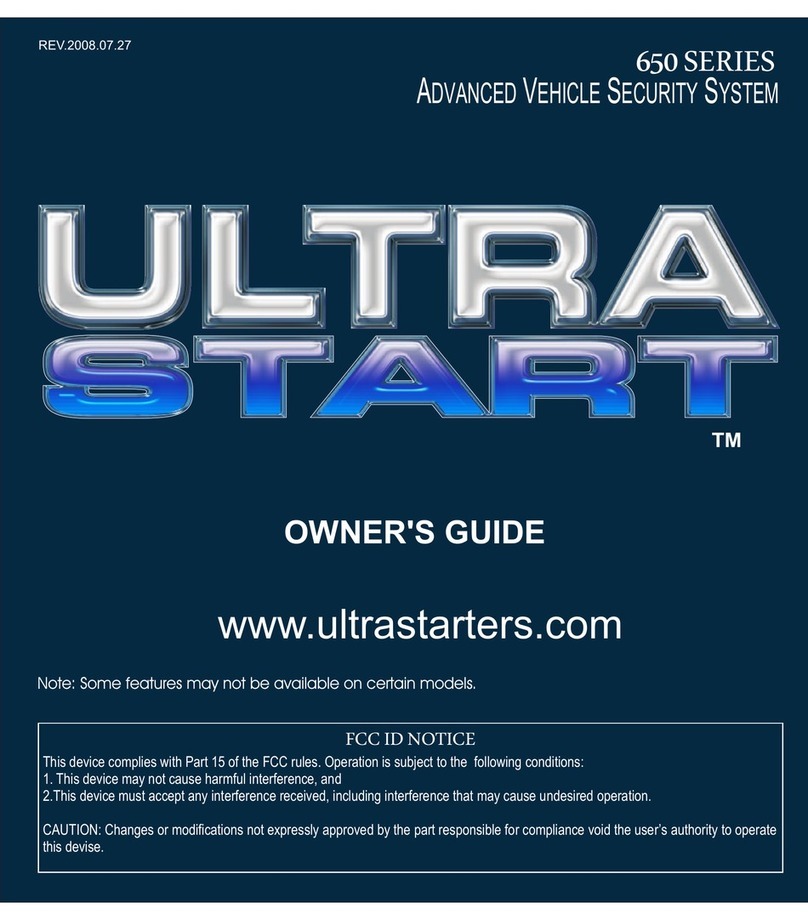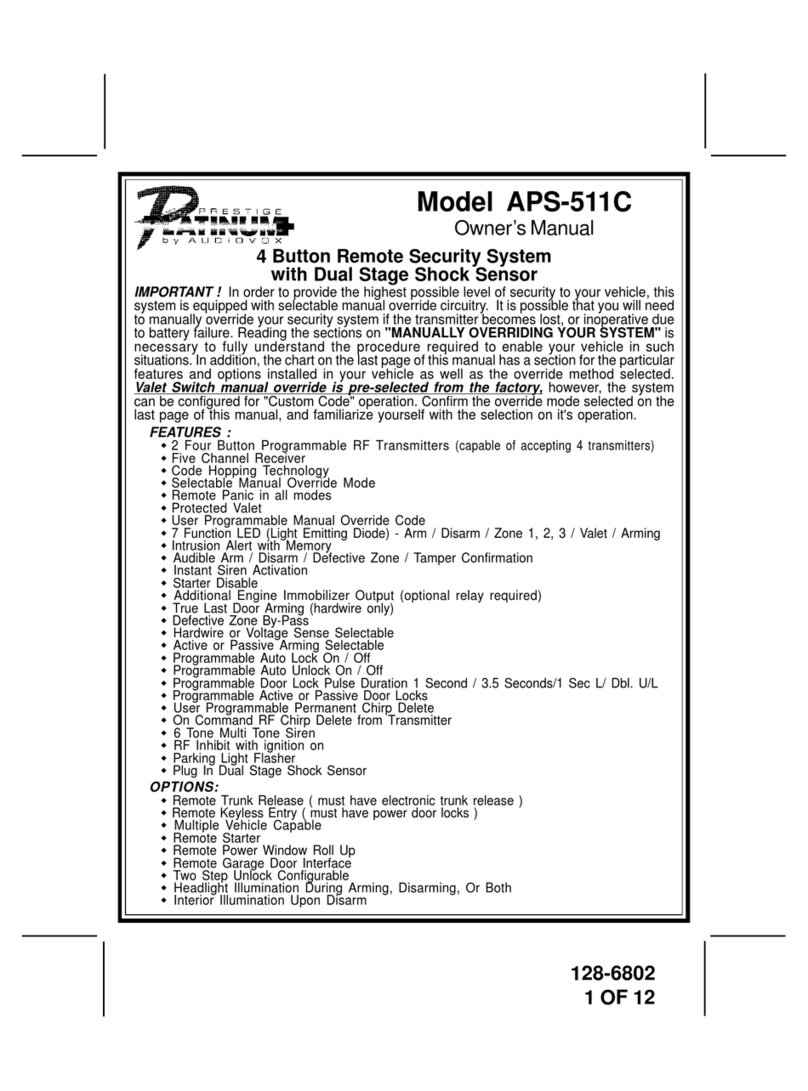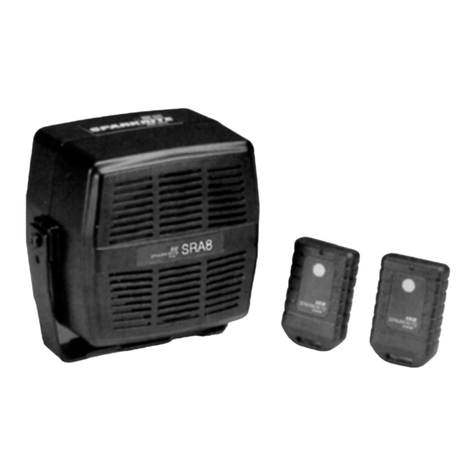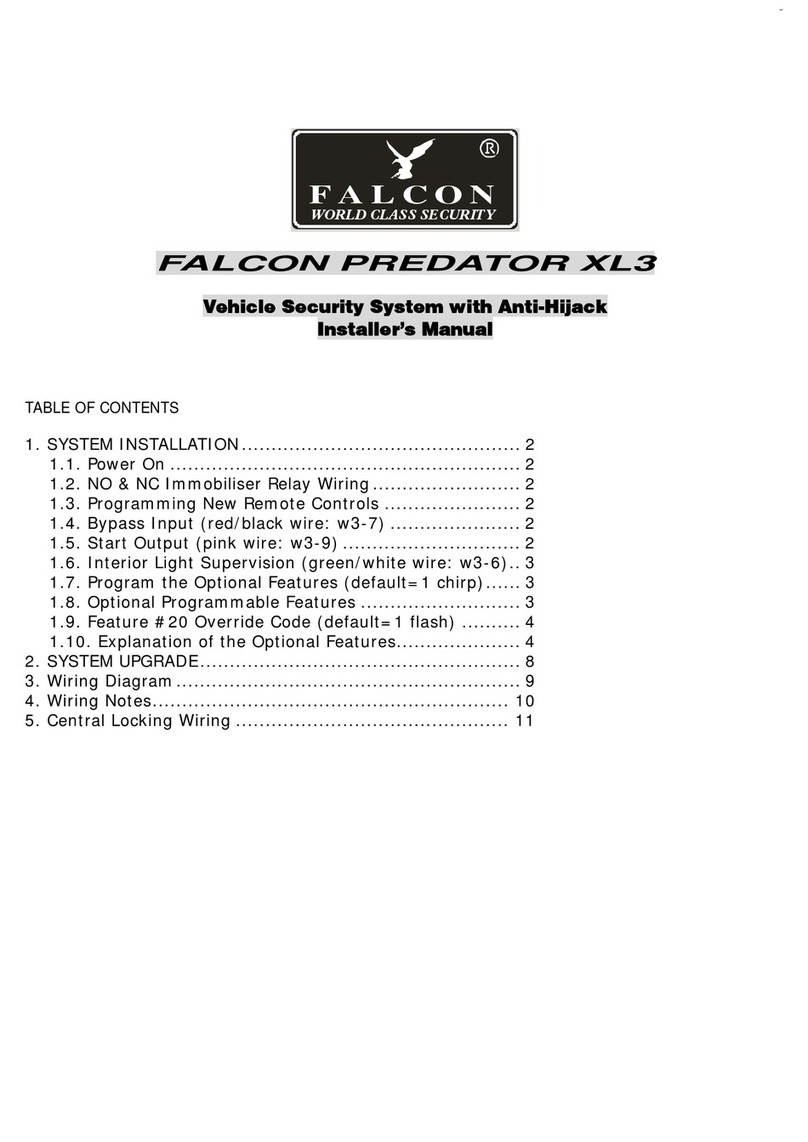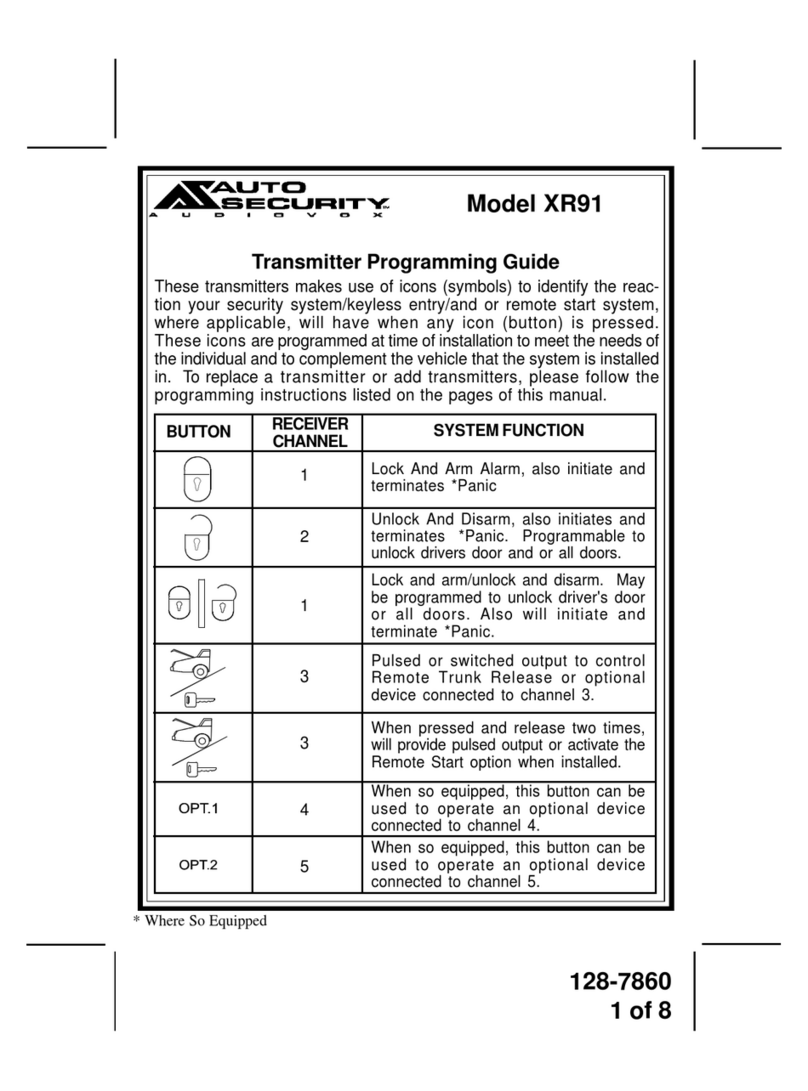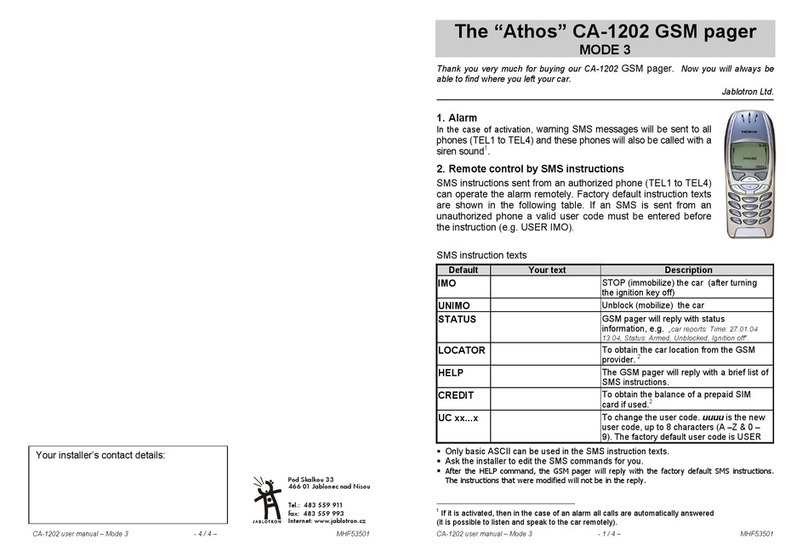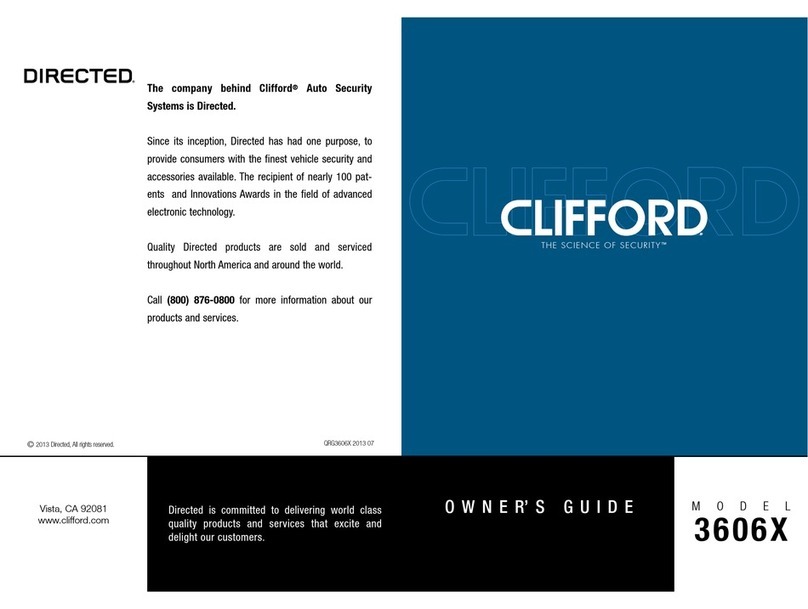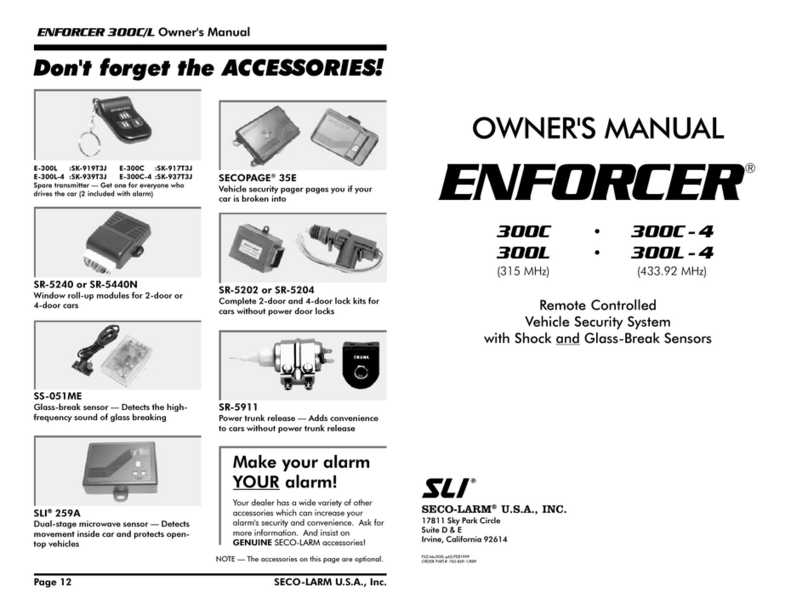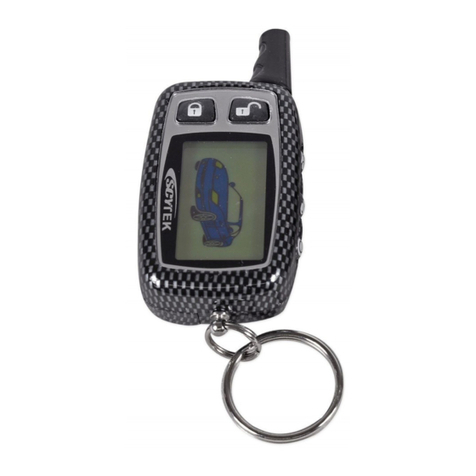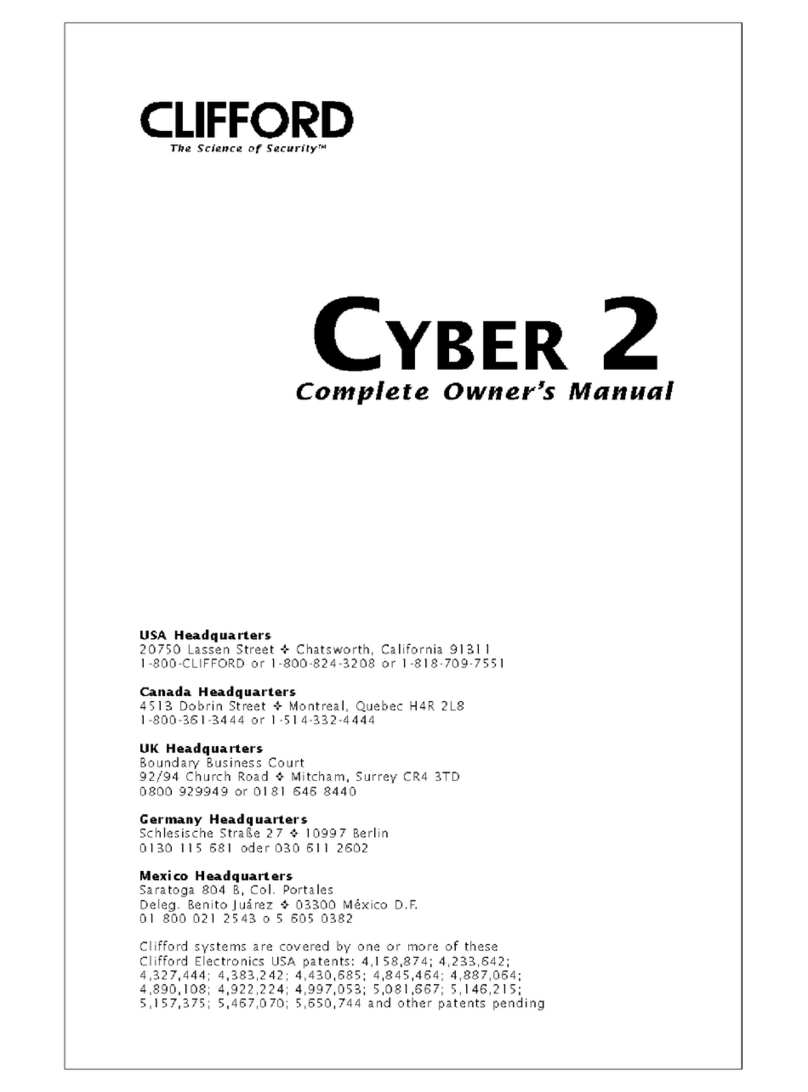
DISARMING THE ALARM SYSTEM
Press button A (arm/disarm), located on the right of the remote control (see fig. 1). The direction
indicator lights will flash once and the alarm may give one audible tone (programmable function)
generated at the same time to indicate that the alarm system has been disarmed. The power locks*
will open and, if button C* is activated, all the courtesy lights will turn on for 10 seconds. If an
alarm was generated while the system was armed, when the system is disarmed the direction
indicator lights will flash briefly (½ second) and an audible tone will be produced to indicate that an
alarm condition has occurred. To identify the sensor that caused the alarm, consult the “ALARM
AUTO-DIAGNOSTICS” paragraph.
SENSOR ACTIVATION AFTER ARMING
Once armed an alarm condition will be generated by power supply interruption*** and the turning
ON of the ignition key. An alarm condition will not be generated by the door/bonnet/boot being
opened or interior (ultrasonic/microwave sensors) movement until the alarm has been armed for
30 seconds (pre-alarm time).
ALARM CONDITION
Whena sensor is activated, the system will generatean alarm condition:direction indicators flash and
the siren sounds for 30 seconds (alarm cycle). At the end of the alarm cycle, if the same sensor is still
activated, the alarm will generate an alarm cycle again.
ALARM CYCLE LIMITATION
The system will automatically exclude the sensor, which has generated 8 alarm cycles. All the
other sensors will continue to protect the vehicle. The maximum number of alarm cycle for every
sensor is 8, except for power supply interruption sensor*** (10 alarm cycles).
Note: If a sensor continues to remains activated whilst in the pre-alarm time, the system will
automatically exclude this sensor at the end of the pre-alarm time and not generate an alarm
condition. When the alarm system is next disarmed the direction indicator lights will flash briefly (½
second) and an audible tone will be produced to indicate that a senor was activated whilst arming.
To identify the sensor that was activated, consult the “ALARM AUTO-DIAGNOSTICS” paragraph.
